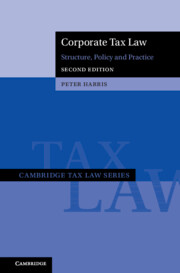Book contents
- Corporate Tax Law
- Cambridge Tax Law Series
- Corporate Tax Law
- Copyright page
- Contents
- Preface
- Abbreviations
- Introduction
- 1 Taxation of Corporate Income When Derived
- 2 Taxation of Corporate Income When Distributed
- 3 Taxation of Corporate Income
- 4 Creating Share Interests
- 5 Transferring Share Interests
- 6 Terminating Share Interests
- 7 Varying Share Interests
- 8 Dividend and Capital Stripping and Value Shifting
- References
5 - Transferring Share Interests
Published online by Cambridge University Press: 29 February 2024
- Corporate Tax Law
- Cambridge Tax Law Series
- Corporate Tax Law
- Copyright page
- Contents
- Preface
- Abbreviations
- Introduction
- 1 Taxation of Corporate Income When Derived
- 2 Taxation of Corporate Income When Distributed
- 3 Taxation of Corporate Income
- 4 Creating Share Interests
- 5 Transferring Share Interests
- 6 Terminating Share Interests
- 7 Varying Share Interests
- 8 Dividend and Capital Stripping and Value Shifting
- References
Summary
This chapter deals with disposals of shares. Due to the derivative nature of shares, the tax on corporate income when derived can be duplicated when gains on the disposal of shares are taxed (economic double taxation). The stripping effect of dividends can remove the duplication. These themes inform various options for the taxation of share gains. A major issue here is how taxation of gains on the disposal of shares relates to the taxation of dividends (Chapter 2). There may be similar treatment, but this is not always possible depending on the type of dividend relief adopted. Other methods of integration are possible. Share disposals may cause a change of ownership of a corporation with consequences at the corporate level, particularly on a corporation’s tax attributes such as losses. Many countries restrict the use of corporate carry forward losses on a change of ownership. Defining a sufficient change highlights the artificiality of corporations. Other tax attributes are considered, including the tax value of assets, unrealised losses and the carry forward of credits. The chapter concludes with a comparison of the tax consequences on the sale of a corporate business either directly or indirectly through the sale of shares.
Keywords
- Type
- Chapter
- Information
- Corporate Tax LawStructure, Policy and Practice, pp. 441 - 532Publisher: Cambridge University PressPrint publication year: 2024



